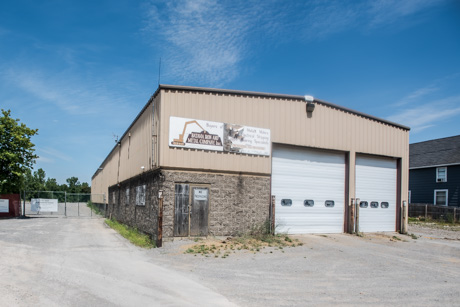
After nearly 50 years operating as a metal recycling business, and then sitting defunct for another dozen or so years next to Dwyer Stadium, Batavia Iron and Metal has been on a slow track for cleanup, and the next phase to get it back on the tax rolls has begun, said Jeff Wernick of New York State Department of Environmental Conservation.
DEC put out a call for bids to conduct remediation of approximately 50,000 tons of PCB-impacted soil for off-site disposal, backfill and restoration, Wernick said in response to The Batavian’s inquiries.
“DEC received four viable bids,” Wernick said. "The bids are associated with the remediation efforts under the State Superfund program. Work is being performed under a self-implementation agreement with the United States Environmental Protection Agency. DEC’s role for future use is limited to the completion of the cleanup activities and the release of the remediated site for residential or commercial use in accordance with local zoning ordinances.”
The winning bid award is expected in the fall, with work to start in the spring of 2023, he said. The scope of work is estimated to cost $15 million to $20 million. Remedial activities include the removal of PCB-contaminated soil, temporary water treatment, backfill, and restoration, including the transport and disposal of non-hazardous and hazardous soils.
The site at 301 Bank St., Batavia, earned special attention from the Department of Environmental Conservation more than a dozen years after it went defunct and was abandoned. Cleanups had been initiated for neighboring properties and the business site from 2013 to 2018.
A DEC fact sheet from 2018 states that, based on the April 2013 Record of Decision, the cleanup included removal of contaminated soil and debris and from on-site and parcels located near the former facility. The Site operated as a metal recycling facility from 1951 to 1999.
Wernick said that another fact sheet with additional details will be issued prior to the start of this next construction and remediation work.
Batavia Iron and Metal aftermath
Batavia Iron and Metal also purchased and handled electrical transformers on the property. Two furnaces operated at the facility from the early 1970s until 1994 for the purpose of reclaiming wire and smelting white metals. Prior to the use of the furnaces, the facility utilized open burning in dumpsters in the yard to remove insulation from the wiring.
DEC is designing and implementing this cleanup to remove the contaminants that have migrated from the site onto City property, the Fact Sheet states. As part of the remedy, installation of sub-slab depressurization systems at three residences near the site was completed in 2013. In addition, a cleanup involving soil removal at three residences was completed in 2014.
Further work included soil removal and restoration activities along the rear property boundary of 299 Bank Street and 301 Bank Street. The goal of the cleanup effort was “to ensure the effective removal and proper disposal of contaminated soil and to restore the property with clean soil.” At least one neighbor — who lives next door to the defunct business — had complained about potential health issues from toxins leaching into his water system, and how his trees would not grow in the contaminated soil.
Work done in 2017 was performed by Nature’s Way Environmental of Alden, with oversight and inspection provided by DEC. Soil identified for remediation was to be excavated and disposed of off-site. All areas that were disturbed during the removal were also to be restored, and the same for any City of Batavia-owned roads, utilities, or other infrastructure impacted by the cleanup activities.
DEC and the New York State Department of Health approved a Community Air Monitoring Plan that required continuous air monitoring during all excavation and backfilling activities to ensure no additional contamination was released to the environment or adjacent properties during the cleanup.
The project is being funded and conducted pursuant to terms of the State Superfund program, intended for “Brownfield” areas that are contaminated with toxic waste and in need of remediation for safe future use.
To read the full Fact Sheet, go HERE
For prior coverage, go HERE
File photo of Batavia Iron and Metal Co. on Bank Street, Batavia.
